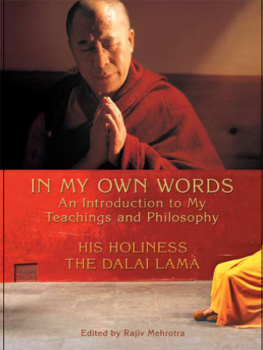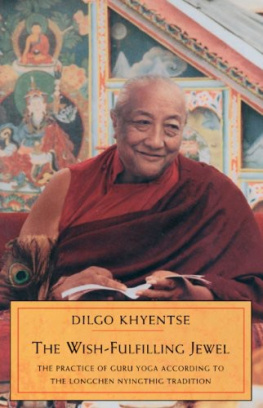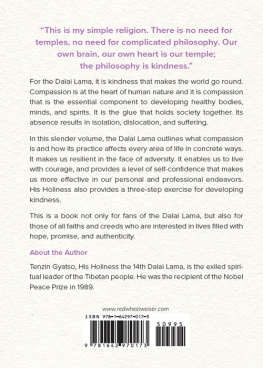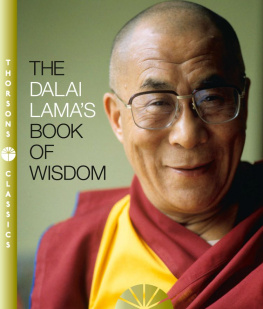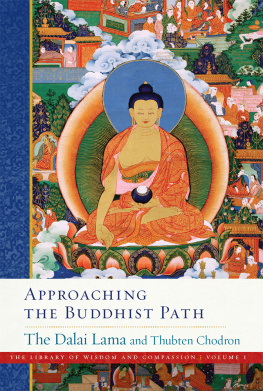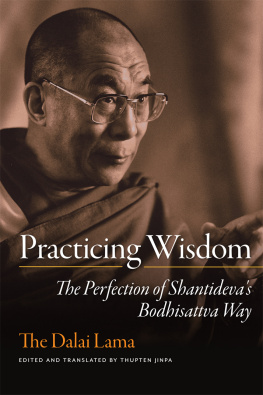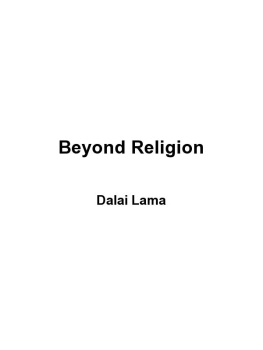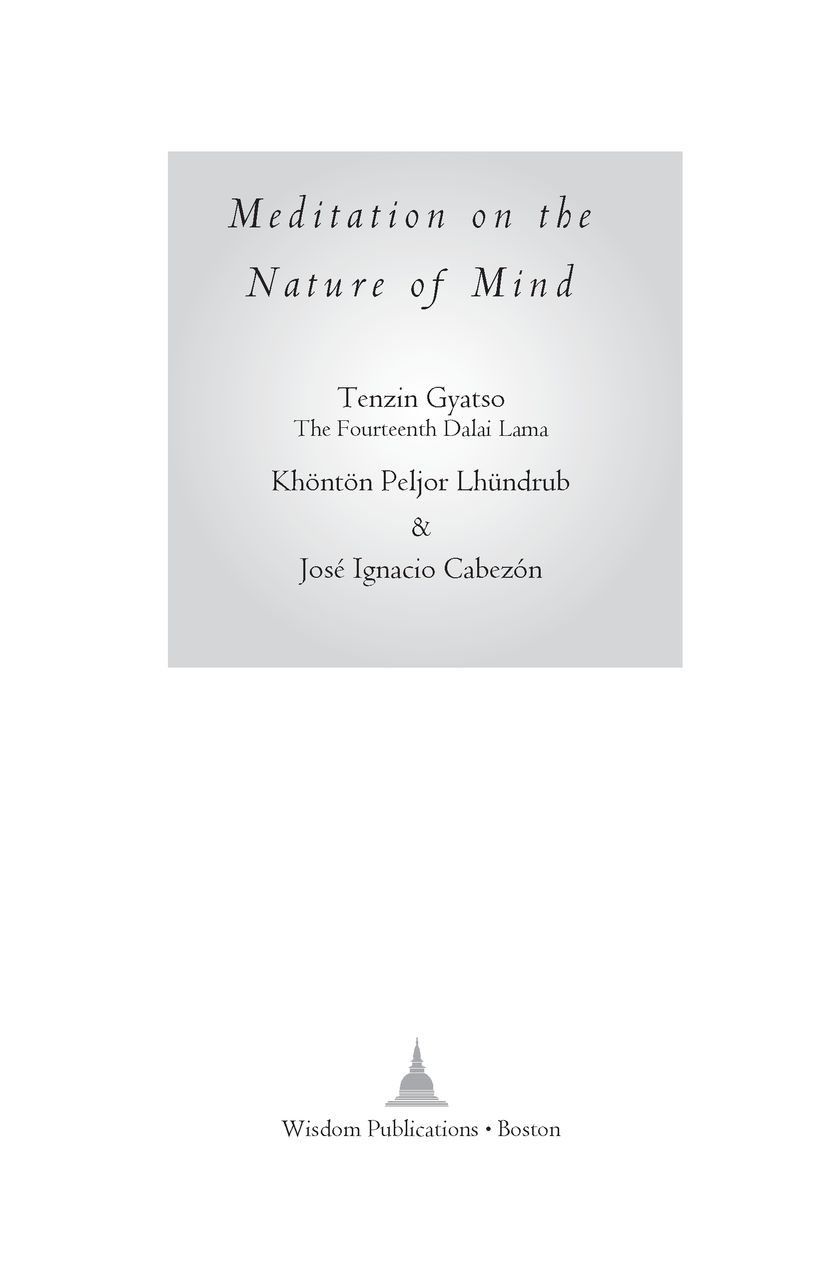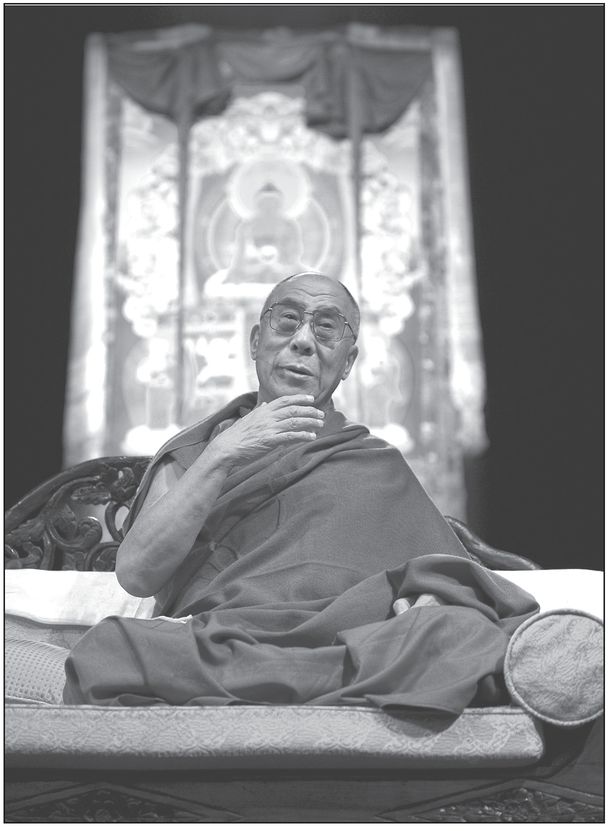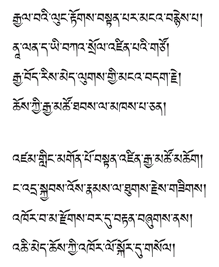Table of Contents
Preface
IN 2007, while reading through a collection of Tibetan texts published two years earlier in eastern Tibet, I came across a short meditation text on the nature of mind, The Wish-Fulfilling Jewel of the Oral Tradition, written by the Tibetan scholar Khntn Peljor Lhndrub (15611637), or Khntnpa. The work piqued my interest for a number of reasons: clearly written, it manages to combine both theory and practical instructions for meditating on the nature of mind in a manner that is easily accessible. Especially interesting was the nonsectarian approach it took in regard to its subject matter, with liberal citations of scholars from across the Tibetan Buddhist spectrum. One other thing made the text intriguing to me personally: it was written by the fifteenth abbot of Sera Monasterys J College, at which I had lived and studied as a monk for six years in the 1980s.
In the summer of 2008, I briefly met His Holiness the Dalai Lama during his visit to Pennsylvania, and as the organizer for his upcoming visit to the University of California Santa Barbara, I requested him to lecture on Khntn Rinpochs text. His Holiness replied that he knew the text, but that his schedule did not permit him to give a detailed commentary on the work. Instead, he agreed to offer some general remarks that would contextualize Khntnpas text within the broader field of Indo-Tibetan Buddhist thought. This became the subject of His Holinesss first lecture at UCSB on the morning of April 24, 2009, a lecture entitled The Nature of Mind. His Holinesss broad-ranging overview of this important topic constitutes the first part of this book. The lecture insightfully distills some of the most central themes of Buddhism: why the mind is so essential to the tradition, how science and traditional Buddhist learning can benefit from mutual interaction, what distinguishes subtle and grosser levels of consciousness, how the different schools of Tibetan Buddhism elaborate such a distinction, and how all of these schools have a common source in the scholarly tradition of Nalanda Monastery, the greatest Buddhist university of ancient India. His Holinesss teaching was profound and erudite, both in scope and detail, and I am grateful to him for allowing its publication in this book.
The rest of this volume is devoted to Khntn Peljor Lhndrub and to what is arguably his most important extant work, The Wish-Fulfilling Jewel. As little has been written in Western languages about Khntn Rinpoch, I have composed a short biography of this interesting figure. The biography is based on the few Tibetan sources on Khntn Rinpochs life available to us, chiefly the biography written by his most famous student, the Fifth Dalai Lama. An annotated translation of The Wish-Fulfilling Jewel follows the biography. I have tried to make the translation as accessible as possible, rendering Tibetan names and terms in phonetics (rather than in the more difficult Wylie transliteration scheme) and avoiding the use of Sanskrit diacritical marks in the main body of the translation. Full Wylie transliteration, references to the Indian and Tibetan sources cited by Khntnpa, and discussions of a more scholarly nature have been relegated to the notes.
His Holiness the Dalai Lamas 2009 visit to the campus of the University of California Santa Barbara was his fourth visit here, and the first since an endowed professorshipthe XIVth Dalai Lama Chair of Tibetan Buddhism and Cultural Studieswas established in his honor. His Holiness gave two public lectures to sold-out audiences, with five thousand people at each event. This was an extraordinary opportunity for students, faculty, and members of the Santa Barbara and surrounding communities to listen to and learn from one of the great religious thinkers of our time.
His Holiness the Dalai Lama at UC Santa Barbara
In the months prior to His Holinesss visit, a wide variety of programs were organized on campus to celebrate Tibetan culture. The university libraries selected His Holinesss Ethics for a New Millennium as its choice for the annual UCSB Reads program. Two thousand copies of the book were made available at no cost to students, staff, and faculty. Forums on the book were also held throughout Santa Barbara. In addition to the ongoing courses on Tibetan Buddhism and Tibetan language offered in the Religious Studies Department, other classes on Tibetan-Himalayan anthropology and Tibetan medicine were taught in the Department of East Asian Languages and Cultural Studies. In early spring, the prime minister of the Tibetan government in exile, Ven. Professor Samdhong Rinpoche, gave a lecture on The Future of Tibet. A few weeks later, Pico Iyer and Professor Robert Thurman engaged in a public conversation on Why the Dalai Lama Matters at UCSBs Campbell Hall. Members of the UC Santa Barbara faculty also lectured on Tibetan culture and religion in the local community, and the University Art Museum organized an extraordinary exhibition, Toward Enlightenment: The Sacred Art of Tibet, showcasing exquisite tangka paintings from the collection of the Rubin Museum of Art. In the weeks prior to His Holinesss visit, a renowned monk-artist from Gym Tantric College taught a month-long workshop on Tibetan painting for undergraduates; and in the days before His Holinesss arrival, monks from Drepung Loseling Monastery created a beautiful Avalokiteshvara sand-mandala in honor of the Dalai Lama. In the words of Dean David Marshall, This remarkable program of events culminating in the Dalai Lamas lectures was, for our students and the wider community, an example of our public university at its very best.
The planning of these various events, including the visit of His Holiness, involved dozens of individuals from across the campus. I would like to take this opportunity to thank all of my university colleagues for their selfless and devoted work, and Chancellor Henry Yang and Dean David Marshall for their unstinting support and encouragement. I would also like to express my gratitude to the staff of the Office of Tibet in New York, and especially to Mr. Lobsang Nyandak, the Dalai Lamas chief representative. Heartfelt thanks as well to Dr. Thupten Jinpa, His Holinesss most able interpreter, for serving as translator.
For their help with the preparation of the manuscript, I wish to thank Nathaniel Rich, Greg Seton, and Nathan McGovern. In addition, I would like to express my gratitude to Geshe Dorji Damdul for his helpful suggestions on the book as a whole and to Mr. David Kittelstrom of Wisdom Publications for his insightful observations and keen editorial eye.
Finally, as the organizer of the Dalai Lamas visit to the University of California Santa Barbara in 2009, I would like to thank His Holiness for gracing us with his presence and for his inspiring teachings. I also wish to add my voice to the numerous individuals around the world who pray for His Holinesss health, long life, and the fulfillment of all his wishes.



